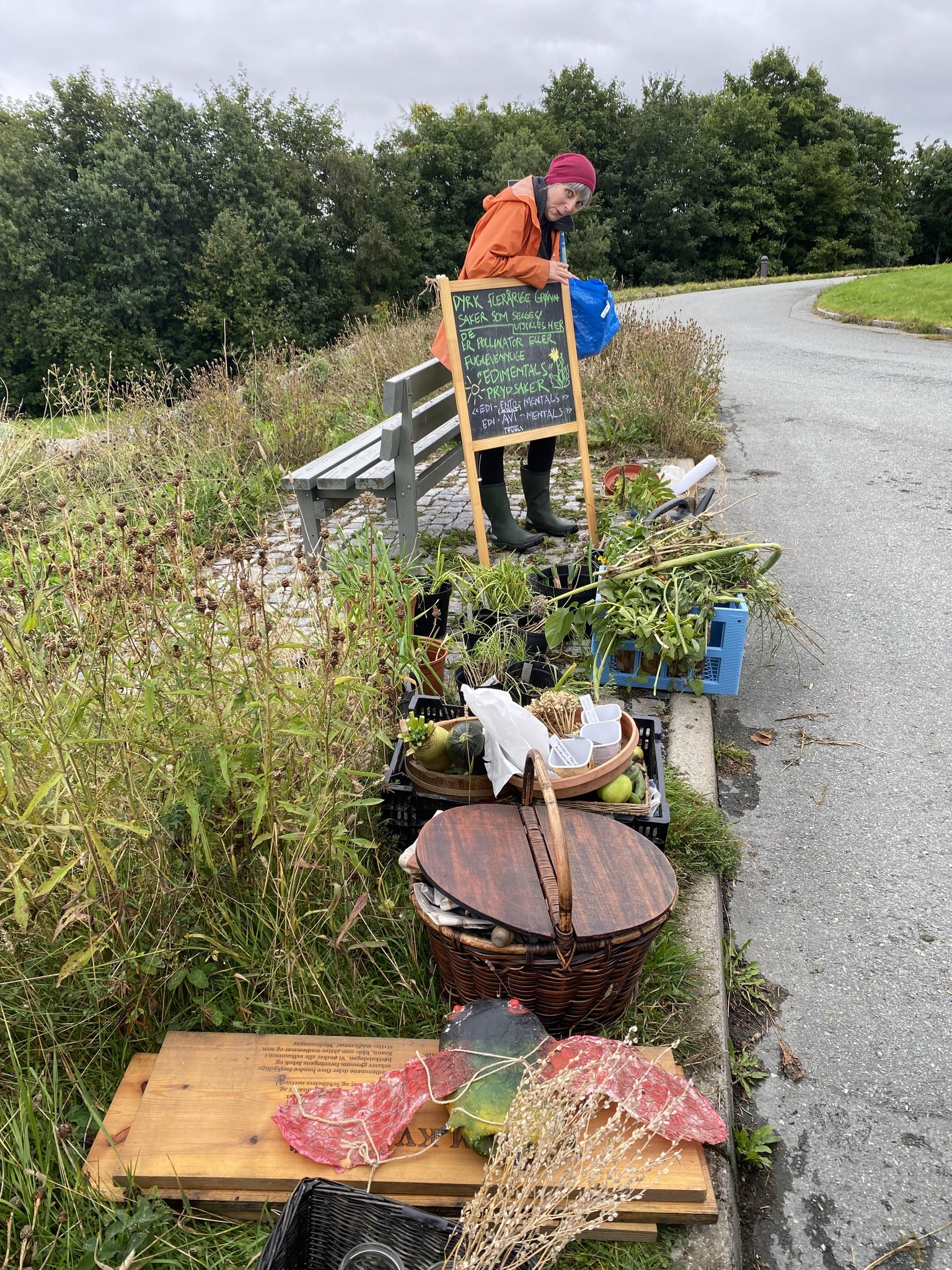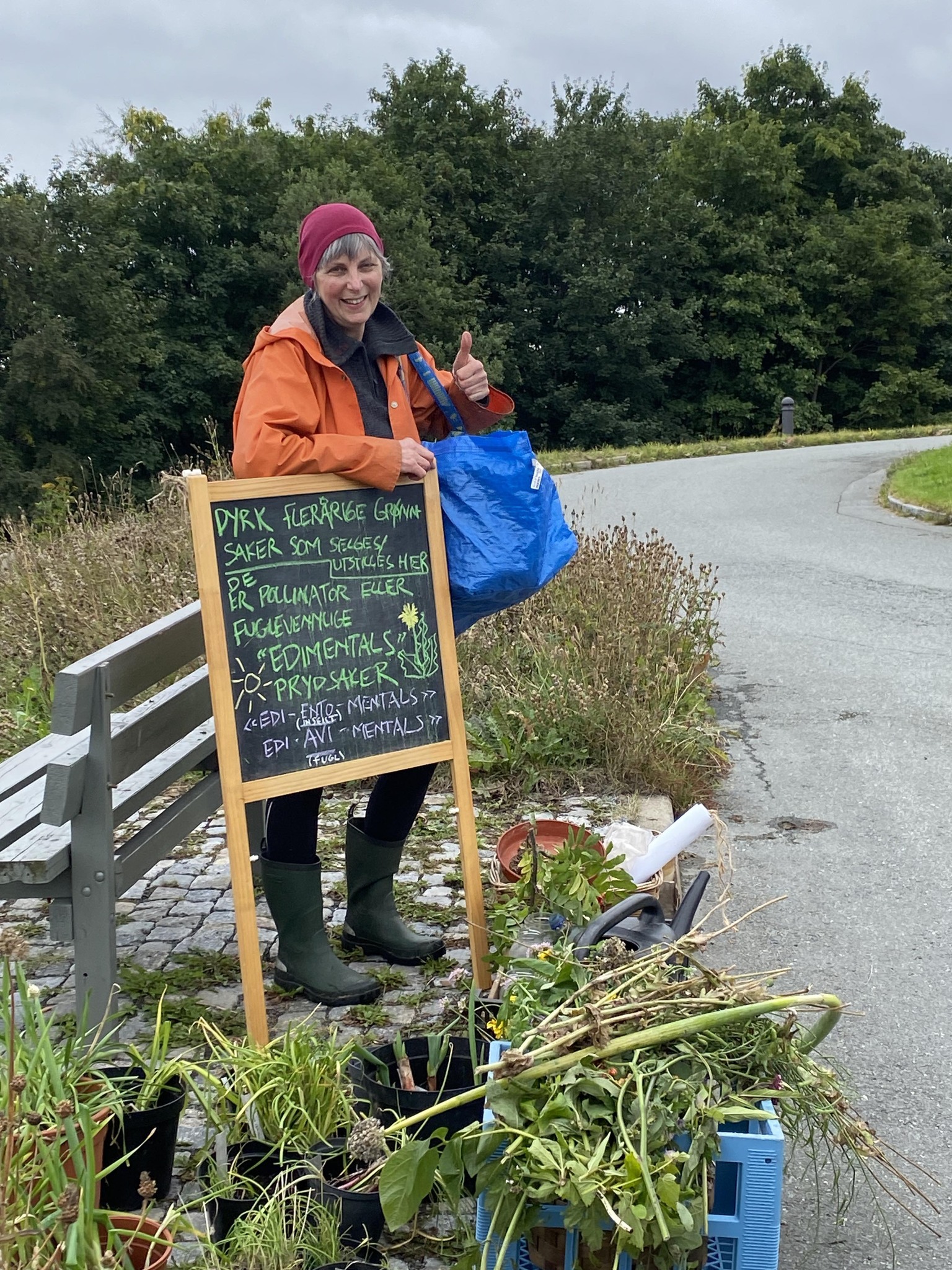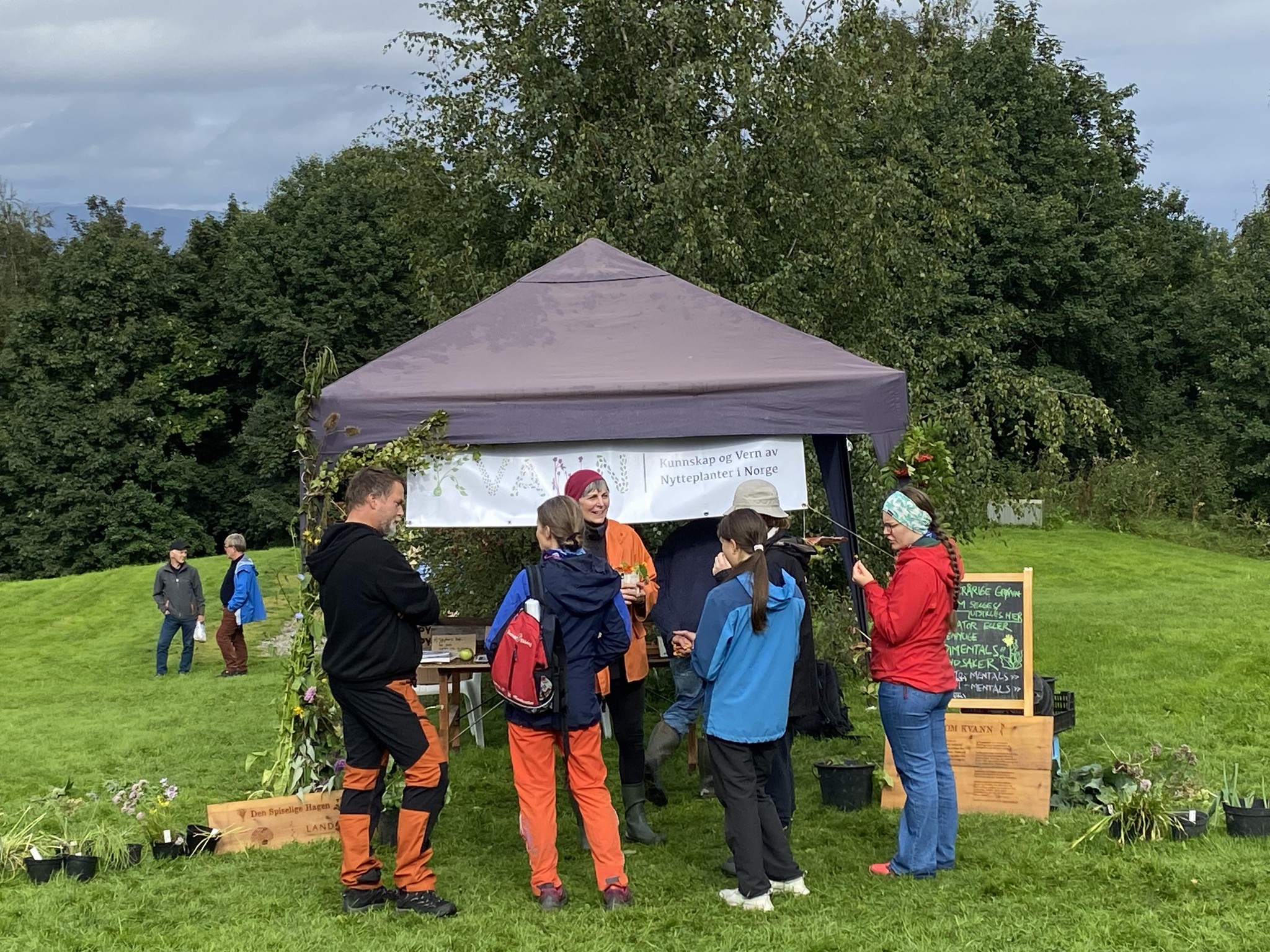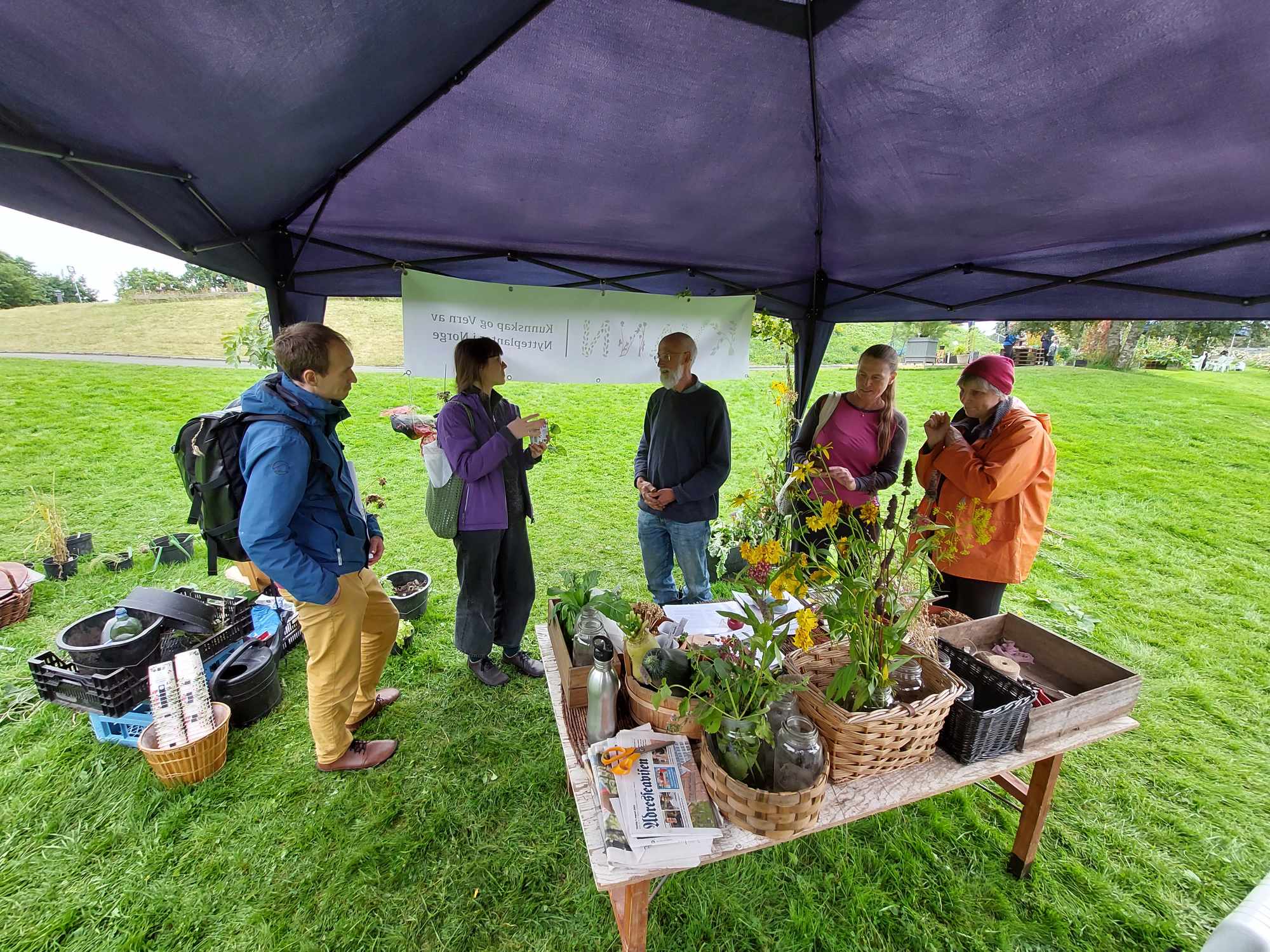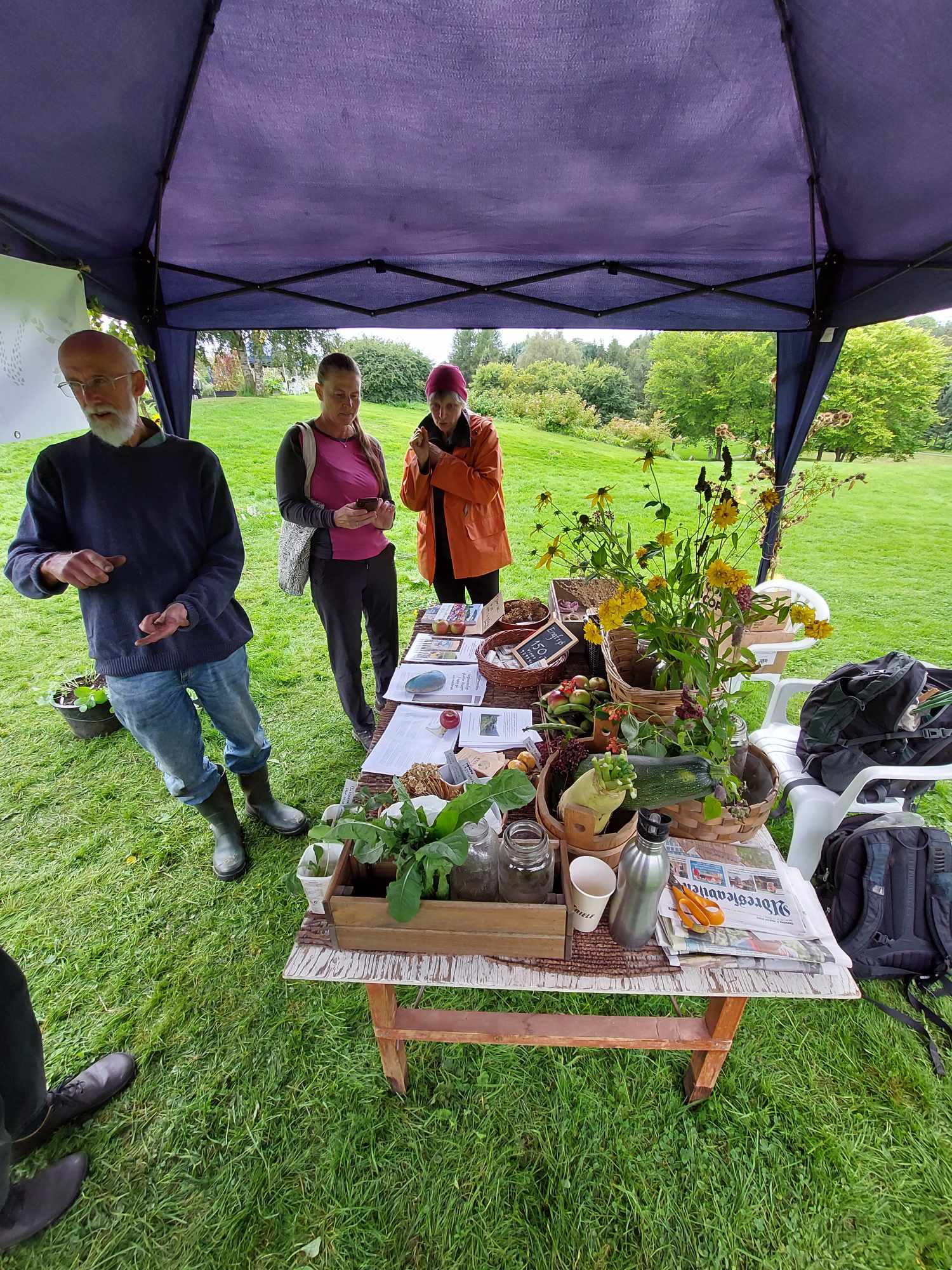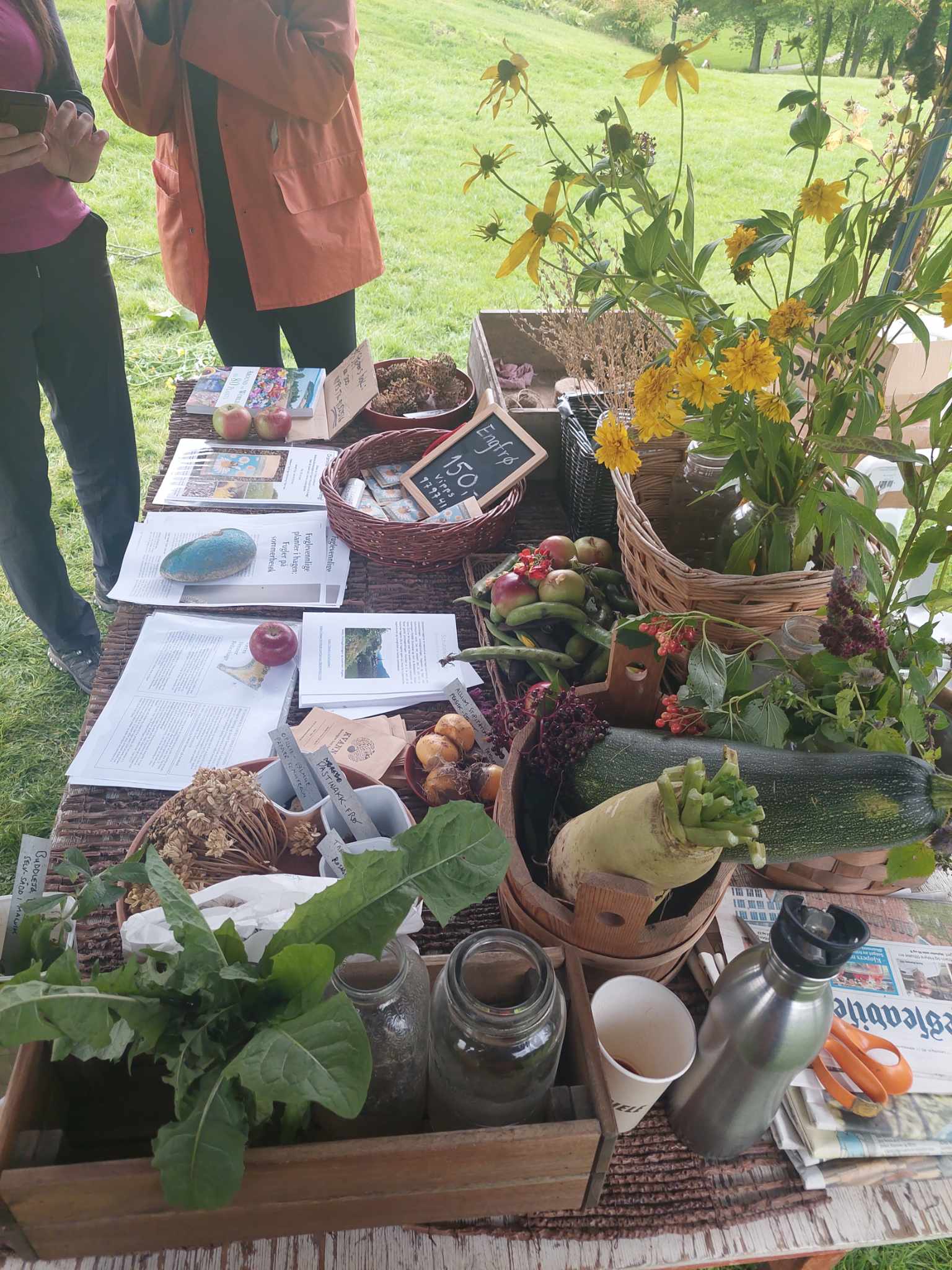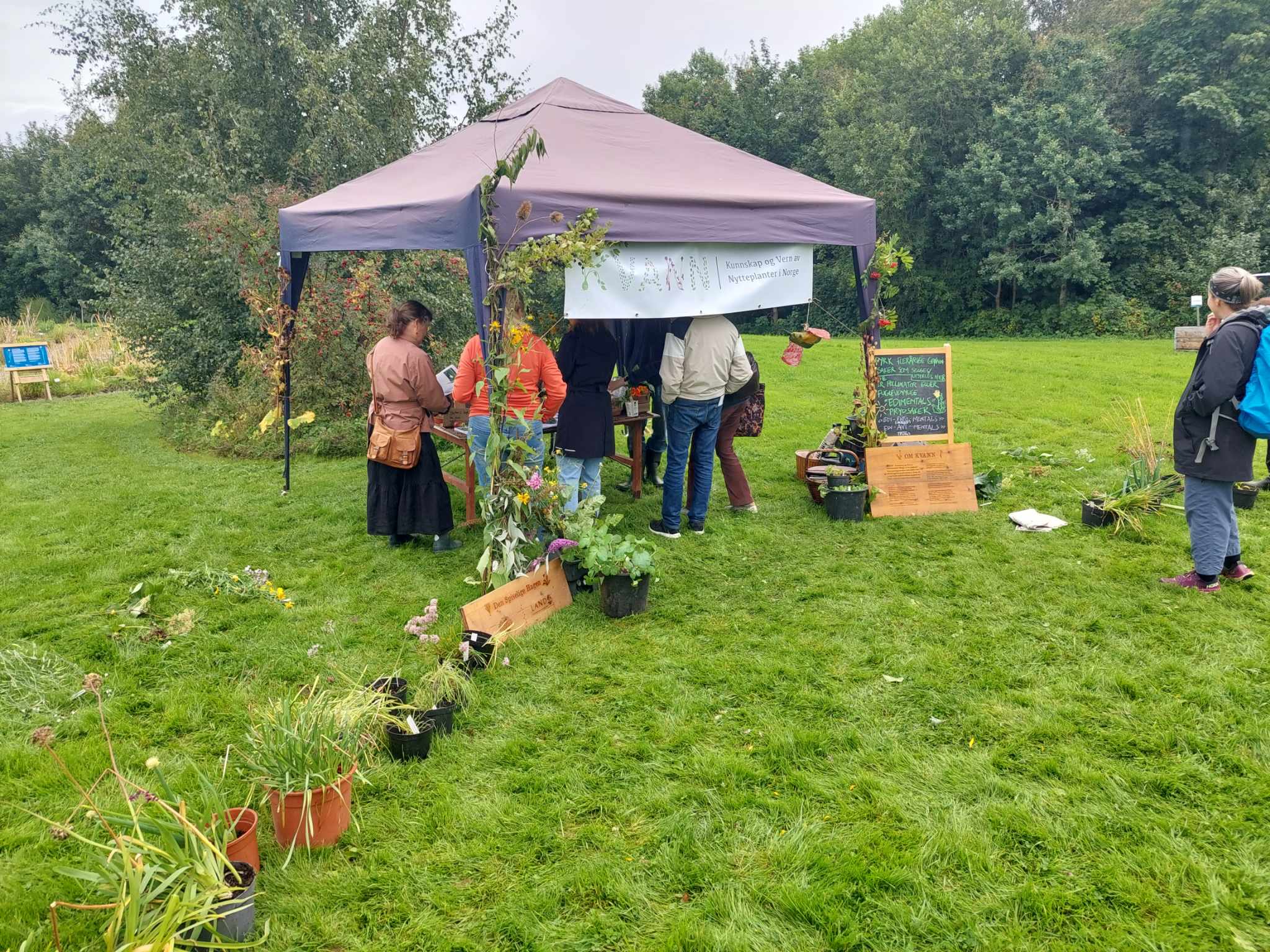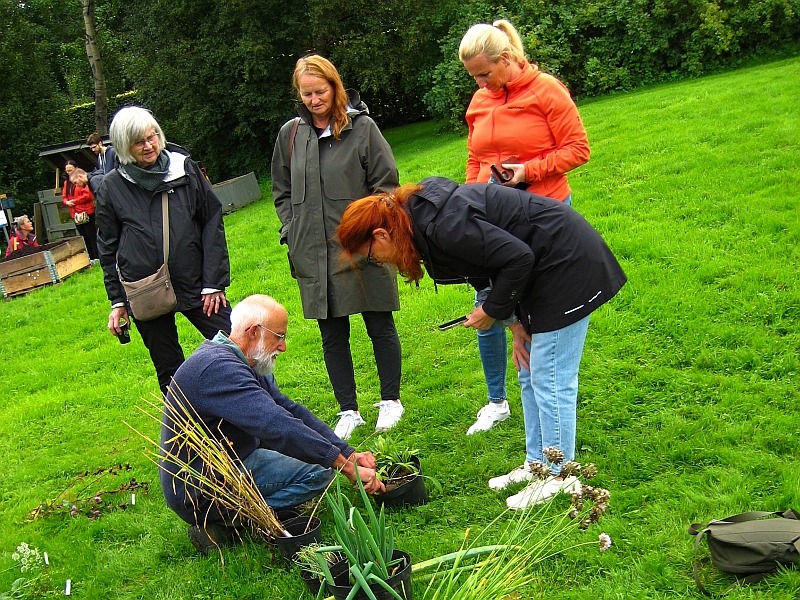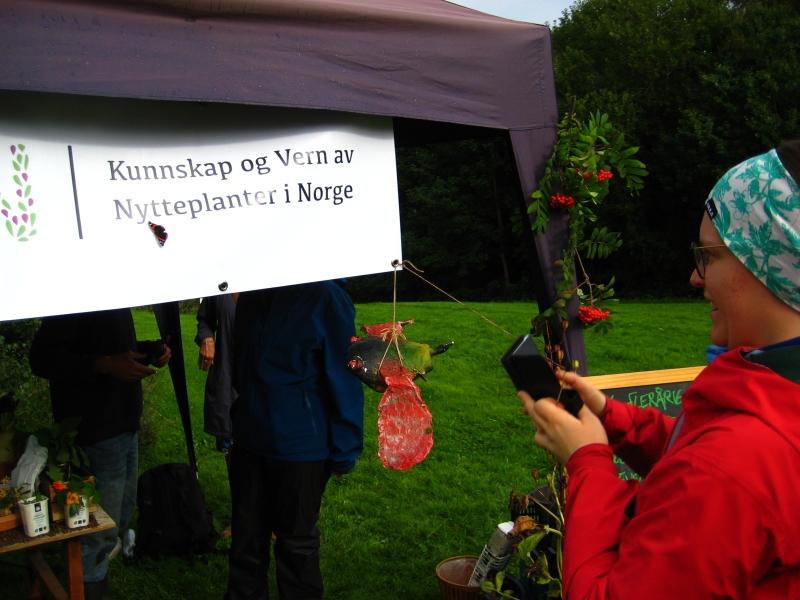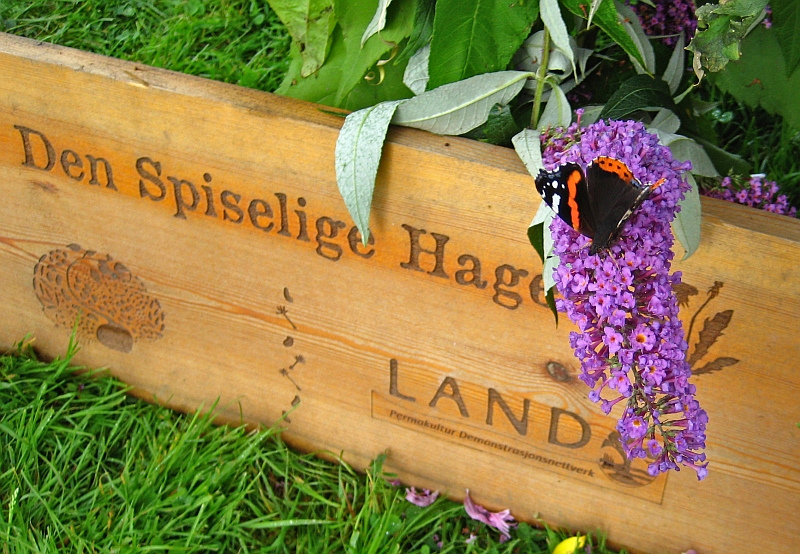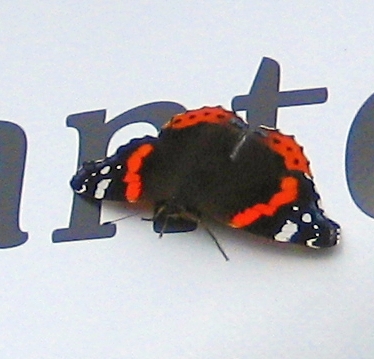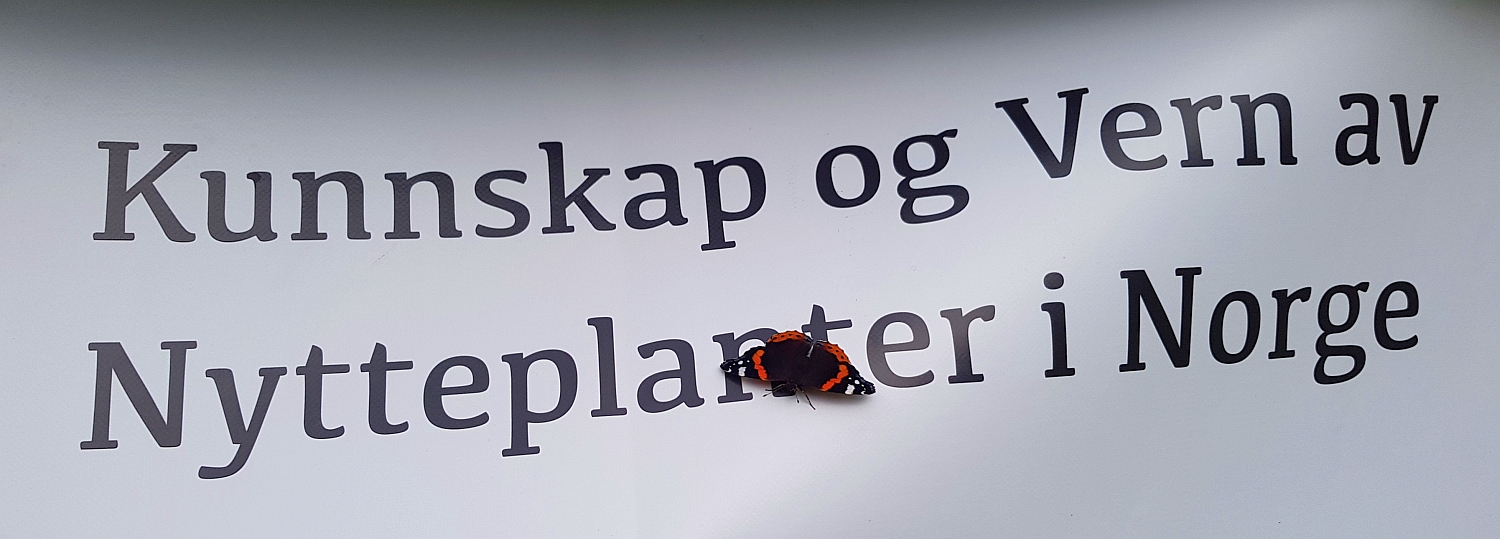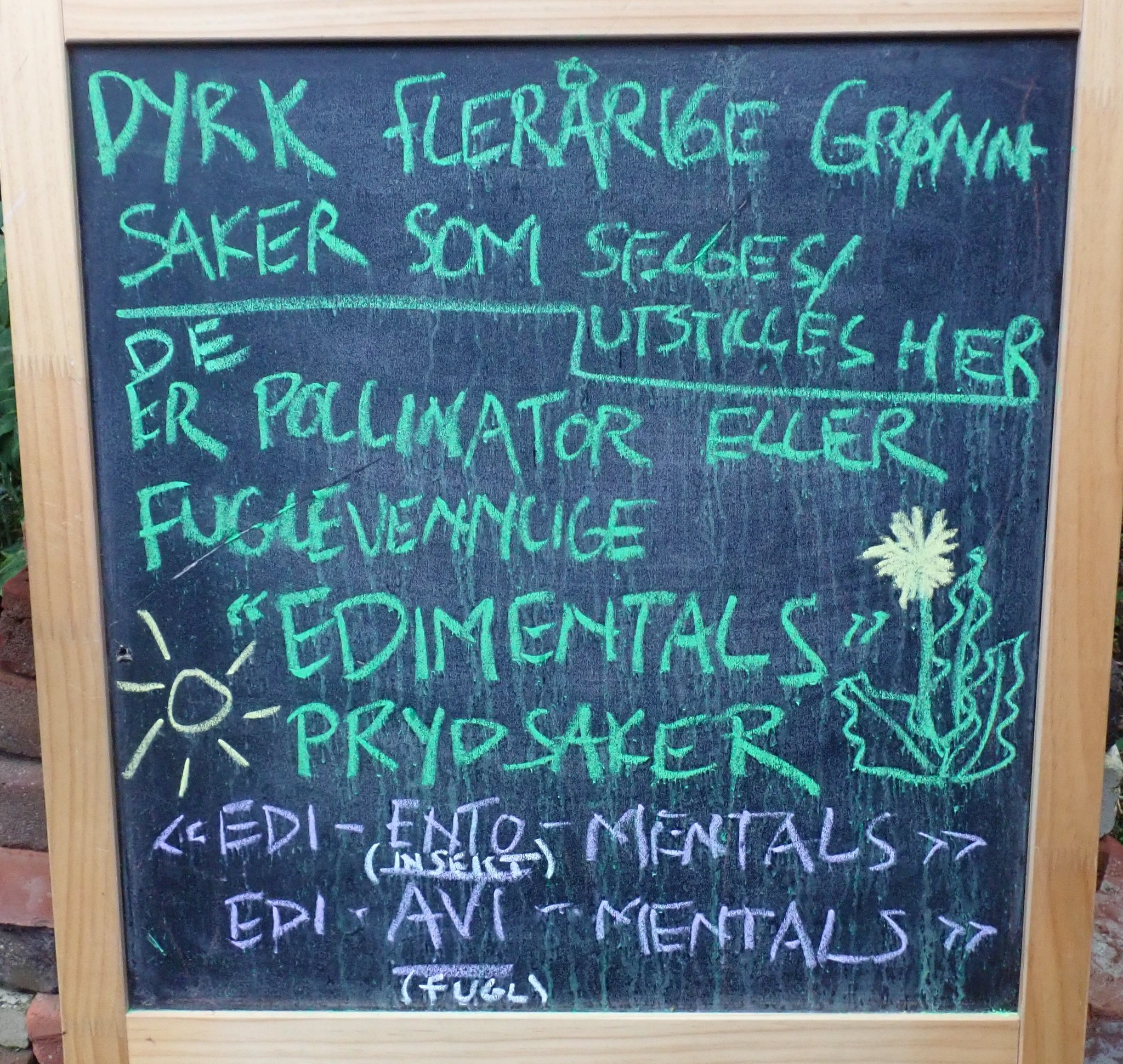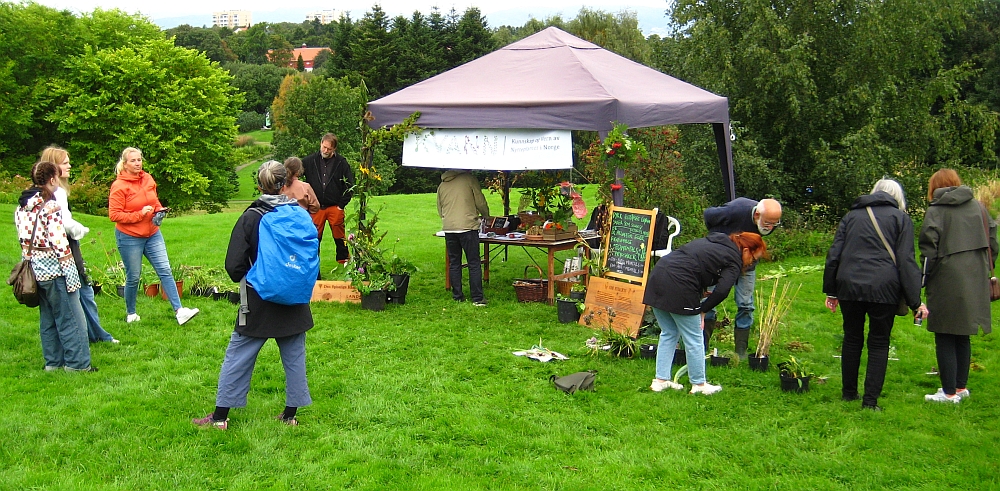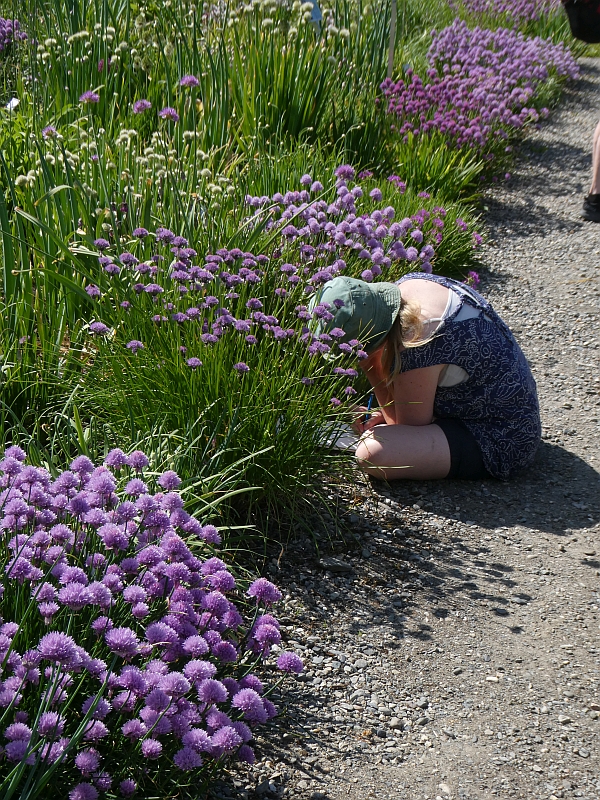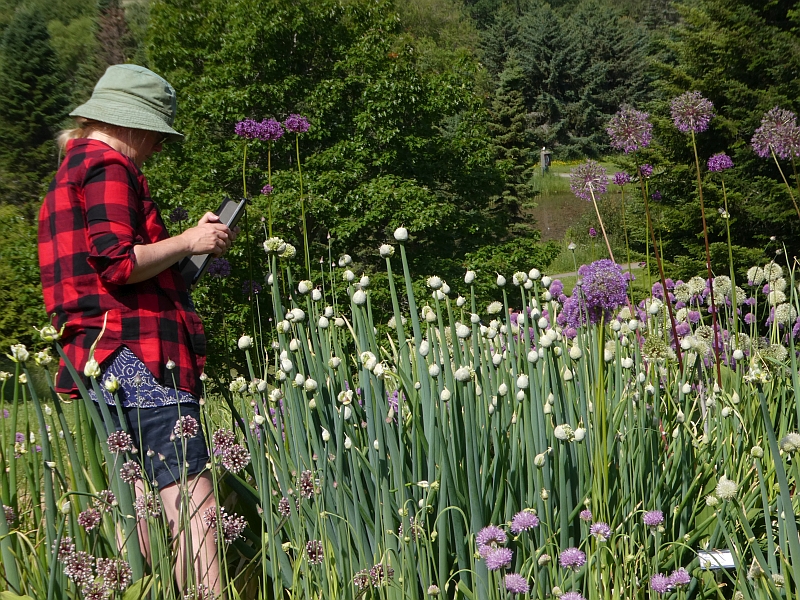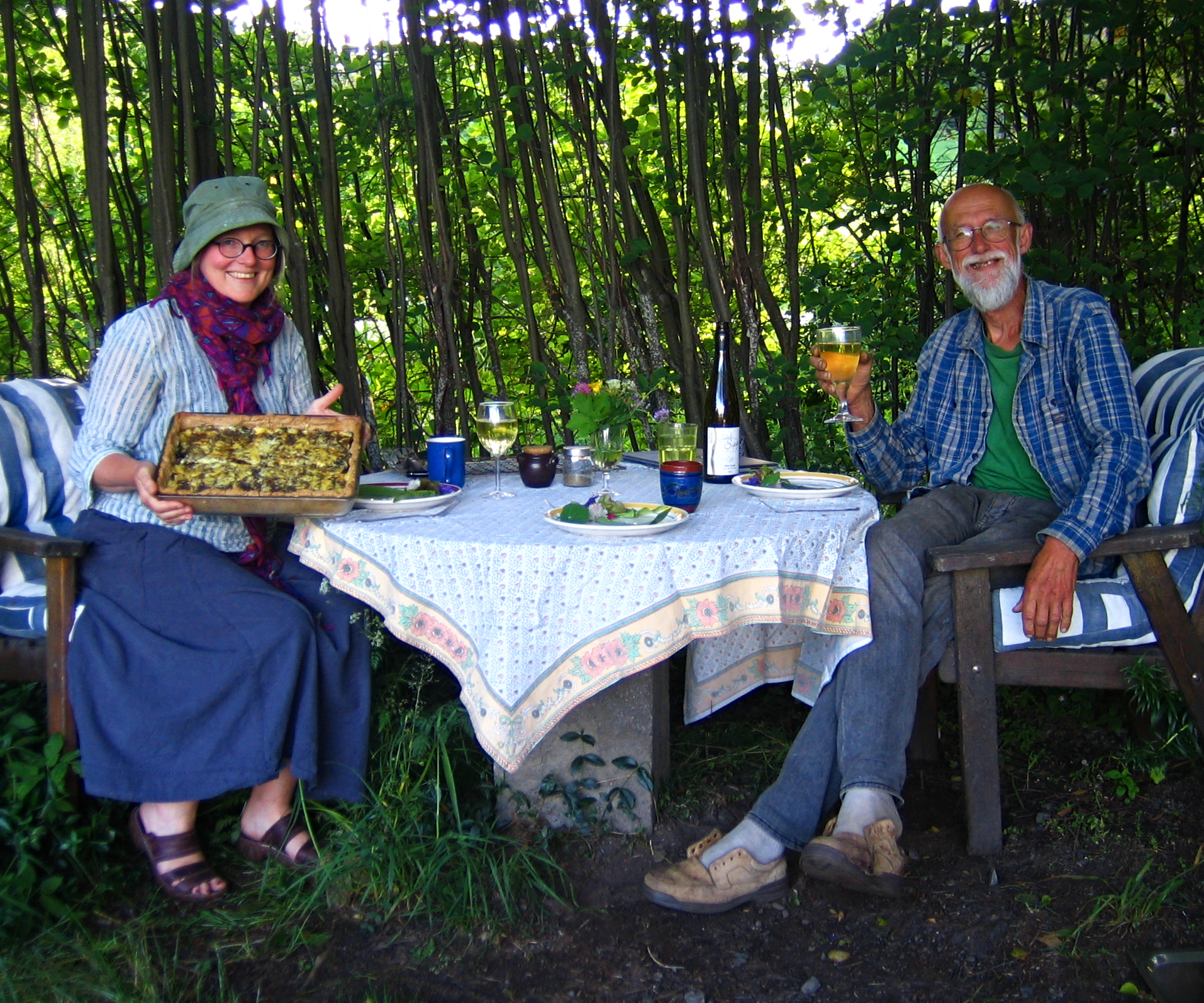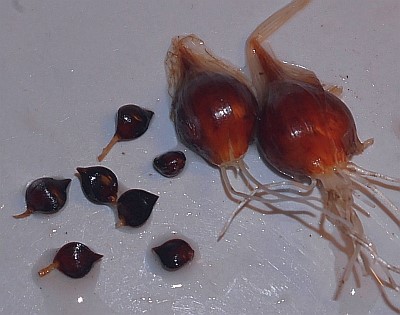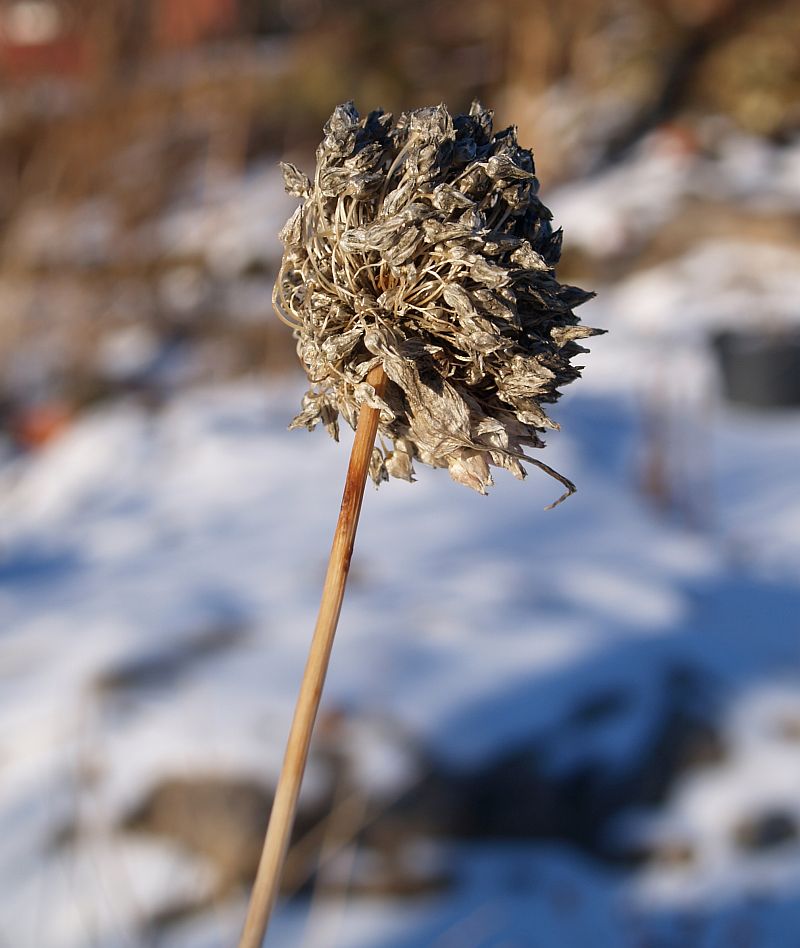The Onion Garden Chicago at the Ringve Botanical Garden in Trondheim, Norway contains over 100 Allium species and over 400 different accessions including a collection of old Norwegian onions which I collected across the country with support from the Norwegian Genetic Resource Centre and the Norwegian Agricultural Authority. You can safely eat all Alliums and most species have in the past been wild foraged. A few do have an unpleasant taste, but most are good to eat including some of the best-known ornamental onions, some of the best edimentals (combined food and beauty) and edi-ento-mentals: also a very popular genus for pollinators like bumble bees. Members of KVANN (Norwegian Seed Savers) in Norway can order most of the Alliums grown in the garden each autumn (please support us by becoming a member at https://kvann.no/bli-med)
These are the 40 main Alliums I talk about, in order of appearance: Allium cernuum (nodding onion; Chicago onion; prærieløk) Allium cernuum “Alan Kapuler”(nodding onion; Chicago onion; prærieløk) Allium canadense Allium fistulosum (rooftop onion; takløk from the Gudbrandsdalen valley) a) From Søre Kleivmellomsæter, Mysusæter in Rondane at 885m asl b) From Nordre Geitsida, Sel municipality Allium cyathophorum var. cyathophorum Allium hymenorhizum Allium insubricum Allium validum (Pacific or swamp onion from California) Allium scorodoprasum (sand leek; bendelløk – garlic derives from old norse geirlauk meaning spear onion as demonstrated) Allium tricoccum (ramps) Allium caeruleum “Bulbilliferous form” Allium wallichii (Sherpa or Nepal onion) Allium senescens (Siberian onion) Allium fistulosum (Welsh onion; pipeløk) from Skedsmokorset, Akershus Allium sativum (hardneck / serpent garlic; slangehvitløk) Allium victorialis “Cantabrica” from northern Spain (Victory onion; seiersløk) Allium victorialis “Røst, Norway” from the island in the Lofoten Islands in Norway (Victory onion; seiersløk) Allium x proliferum “Catawissa onion” (topset, Egyptian or walking onions; luftløk, etasjeløk) Allium pskemense (tower onion; tårnløk) Allium pskemense x fistulosum “Wietse’s onion” Allium ochotense from Japan (earlier Allium victorialis) Allium carolinianum Allium moly (golden garlic, lily leek; gull-løk) Allium caesium Allium schoenoprasum (chives; gressløk) – deadheaded Allium douglasii (Douglas’ onion; Douglasløk) Allium cernuum “Dwarf White” (nodding onion; Chicago onion; prærieløk) Allium prattii x ovalifolium? (Chinese hybrid) Allium galanthum Allium rotundum Allium schoenoprasum subsp. sibiricum “Hokkaido” – later flowering than other chives Allium ovalifolium var. leuconeurum Allium flavum subsp. flavum var. minus (small yellow onion; doggløk) Allium ramosum Allium stipitatum (Persian shallots; Persisk sjalott) Allium maximowiczii var shibutsuense f. album Allium victorialis “Landegode, Nordland, Norway” (Victory onion; seiersløk) Allium nutans “Lena” (Siberian nodding onion; Sibirsk nikkeløk) Allum lenkoranicum
Tag Archives: Ringve Botaniske Hagen
Saint John’s Eve Felafels
Yesterday was St. John’s Eve and many Norwegians (and other Scandinavians) celebrated what is known here as Sankthans or Jonsok with communal bonfires, the big midsummer celebration. Sankt Hans is a short form of Sankt Johannes. There is a special perennial onion which was traditionally harvested on this day in the Netherlands, which I believe to have a much large potential than its current status as a local food crop, as it is so much easier to grow, in particular in areas increasingly suffering from summer droughts and water shortages and avoids common pests of onions and shallots by its early growth and perhaps also resistance. If nothing else, it complements shallots and onions in that it is available much earlier in the year!
There is genetic evidence that St. John’s onion (Johannes-løk) has a unique triparental origin A. × cornutum with three putative parental species, A. cepa, A. pskemense, and A. roylei. Hardiness is probably bestowed by hardy Allium pskemense which has been growing in the Ringve Botanical Gardens in Trondheim for many years. A similar hybrid has been found both in Germany, Croatia and India. It was perhaps more widely cultivated in the past and these are just remnant populations. On 21st June I harvested the Croatian accession from the Onion Garden Chicago at the Ringve Botanical garden which had been left for two years resulting in hundreds of tightly packed onions and on 22nd June from the World Garden at the Væres Venner Community Garden. I replanted in both gardens single bulbs separated by about 10cm. in a roughly circular patch.
Last night, St. John’s Eve, I started a vegetarian midsummer tradition by making St. John’s Felafels with dried broad beans stored since the autumn and golpar spice (from dried seeds of a mix of Heracleum sp.).
See more about Johannes’ shallot at https://www.edimentals.com/blog/?p=22601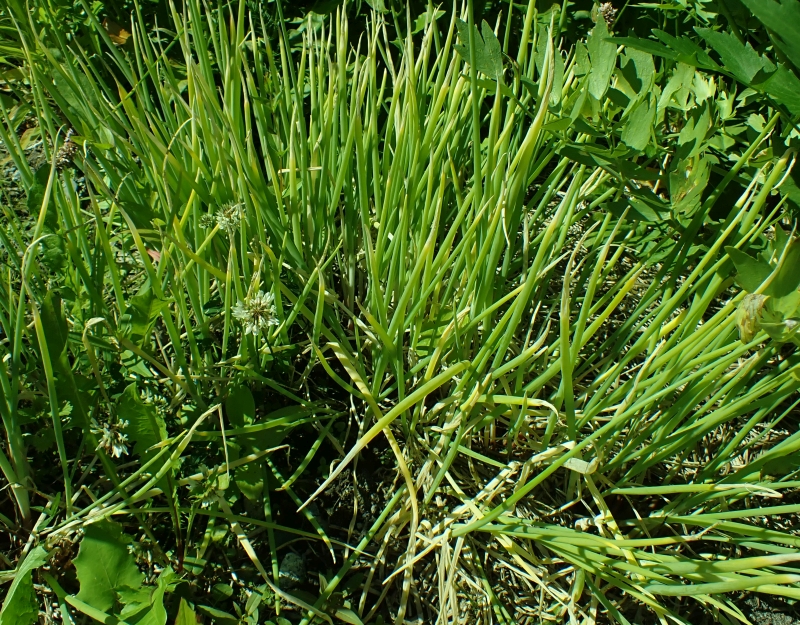

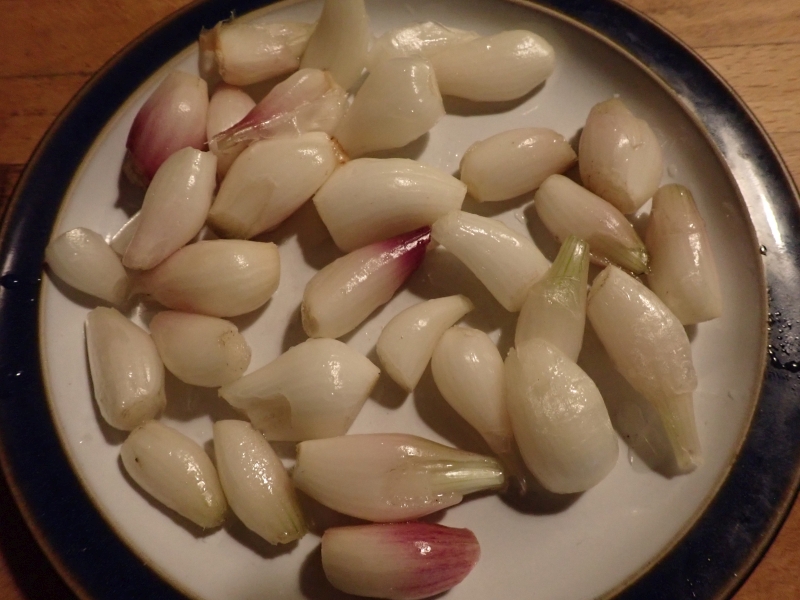


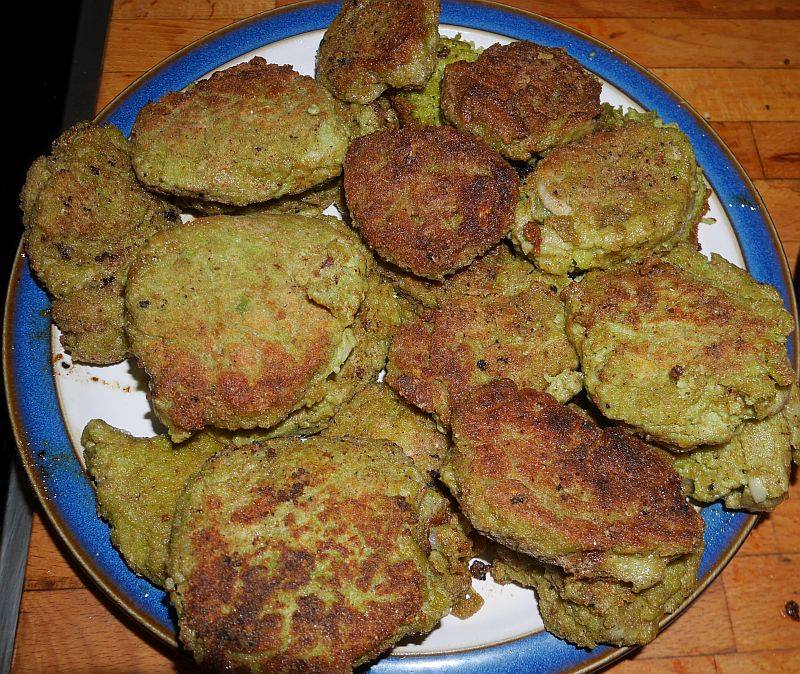
Snow onions
A new video on my youtube channel, the wonderfully exclusive SNOW ONION from the China and the Himalaya https://youtu.be/5mOcQ4aUQVI
We’re back in the Onion Garden Chicago at the Ringve Botanical Garden in Trondheim, Norway on 10th May and the first Allium is in flower. It’s Allium humile, known as the snow onion (snøløk) and one of my favourites and one of the world’s most exclusive foods, known from the ethnobotanical literature to be wild collected both in Kashmir, where it has also been domesticated in kitchen gardens and sold in markets, and in the northernmost Indian state of Himachal Pradesh. Before you ask, I have no idea where you can get hold of seed or plants – my plants are sterile (no seed) – an exceptionally rare edimental (the garden website is here https://www.ntnu.edu/museum/the-onion-garden)

Ringve’s 50th Biodiversity Celebrations
Fantastic day at Ringve Botaniske Hagen’s 50th anniversary garden party for the city. The theme for the day was Biodiversity and Sustainability! KVANN had a stand with a focus on perennial food plants that double as ornamental plants, insect-friendly or bird-friendly. We brought with us a number of such edi-ento-mentals and edi-avi-mentals (insect- or bird-friendly, edible ornamental plants) and many toom home plants or seeds! Eventually, all the flowers attracted biodiversity in the form of two admirals and a number of hoverflies!
Thanks to all KVANN members and others who visited and helped us, and especially Jurgen Wegter who helped and brought flower meadow seeds from Fagerli Naturgård!
Thanks also to Vibekke Vange and my colleagues at Ringve!
Pictures by Jurgen Wegter, Stephen Barstow and Meg Anderson!
Meanwhile in the Onion Garden Chicago
I don’t often post here about my other two gardens, the community garden at Væres Venner and the Onion Garden Chicago at the Ringve Botanical Garden in Trondheim.
The onion garden is nicely maturing and will be officially opened this summer on 26th August, 6 years since I started work creating a garden to house a national collection of old Norwegian perennial vegetable onions collected throughout the country, some 100 botanical species from around the world and many cultivars too!
Here’s a couple of videos showing the garden on 25th June 2023 close to peak flowering, although there will be flowering Alliums all the way from May to the first heavy frosts in October / November!
Tasty, beautiful and a great place to study pollinators! Can you smell it?
There are now over 500 pictures from the garden in this large Facebook album
Artist in Residence Elin Eriksen
Fact-finding mission: promoting perennial vegetables
On Tuesday 23rd May I spent a great few hours together with Eva Johansson and Annevi Sjöberg from Sweden in my 3 gardens. They were on a fact-finding mission in connection with the project ”Främja fleråriga grönsaker i svensk matförsörjning” (Promoting perennial vegetables in the Swedish food supply).
The project Främja fleråriga grönsaker i svensk matförsörjning is financed with funds from the Swedish Agency for Agriculture (Jordbruksverket) within the framework of the Swedish food strategy (den svenska livsmedelsstrategin). The project runs until Dec 2023. The Skillebyholm Foundation manages the project.
Jen from Nottingham in the UK was visiting this week to help and learn, thanks to an RHS bursary! She joined us on the trip and can also be seen in the pictures below!
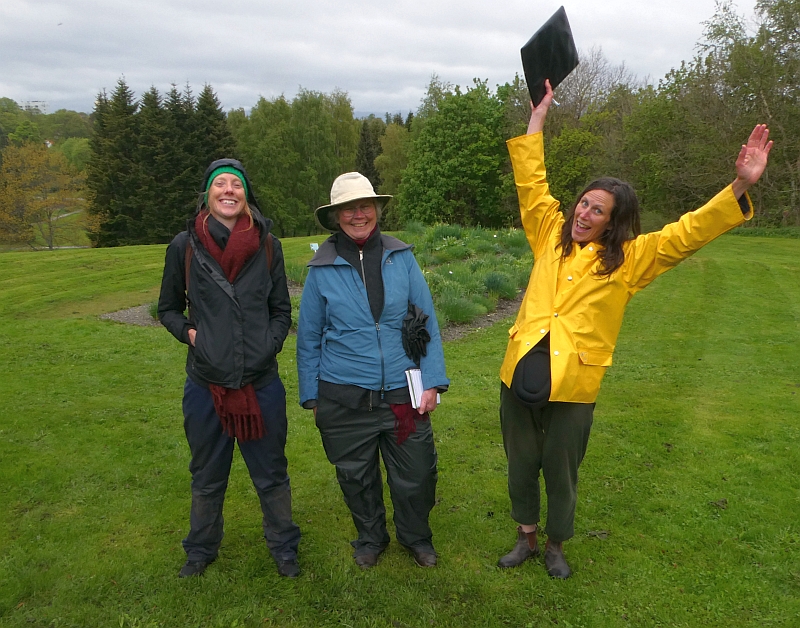


Garden visits with Fosen students
It’s always a pleasure to spend time with students from the Fosen Folk High School from the other side of the fjord. Despite the dreadful weather, we visited all 3 of my sites – the onion garden Chicago at the Ringve Botanical Gardens followed by the Væres Venners Community Garden and, finally, my own garden The Edible Garden (this is the first time I’ve taken a group to all 3 sites!).
Those that took part were two of the “lines”: The Self-sufficiency line and the The Organic Farming line (small scale).
The Organic Farming line were only on the first two visits, so the picture only shows the Self-sufficiency folk!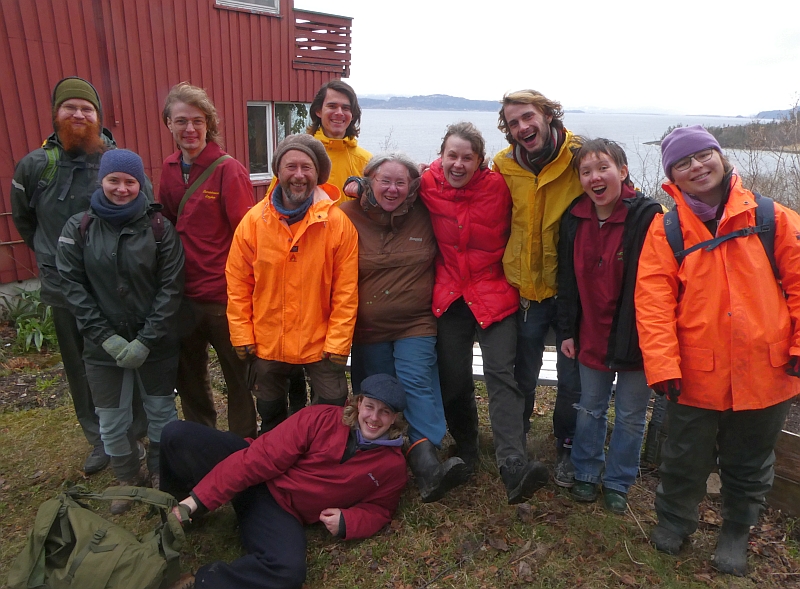
Allium atroviolaceum?: Caucasian Turkish garlic
(Note that there is a comment suggesting that this isn’t atroviolaceum and is probably rotundum, although accessions I’ve received as that species are much lower plants; will check in the spring)
Allium atroviolaceum is sometimes cultivated as an ornamental. I’ve been growing it for some 15 years now and it is admittedly not very productive as an edimental under my conditions, but it’s nevertheless a beauty and it is currently coming into flower both in my own garden and the Allium garden at the Ringve Botanical Garden in Trondheim, where the pictures below were taken. Its wild distribution is in the Crimea, Caucasus, Middle Asia (Mountainous Turkmenistan, Syr-Darya foothill areas) and Iran.
In the Armenian Highlands in Eastern Turkey, there are several ethnobotanical studies documenting its use in local food, presumably wild collected, although there are indications that it might also be cultivated for food including:
1) In otlu peyniri, a herbed cheese made out of sheep’s or cow’s milk. it is used as a flavouring along with many other species (from Wikipedia):
Ranunculus polyanthemos L.(Ranunculaceae)
Nasturtium officinale R. Br. (Brassicaceae)
Gypsophila L. spp. (Caryophyllaceae)
Silene vulgaris (Maench) Garcke var. vulgaris (Caryophyllaceae)
Anthriscus nemorosa (Bieb.) Sprengel (Apiaceae)
Carum carvi L. (Apiaceae)
Anethum graveolens L. (Apiaceae)
Prangos pabularia Lindl. (Apiaceae)
Prangos ferulacea (L.) Lind. (Apiaceae)
Ferula L. sp. (Apiaceae)
Ferula orientalis L. (Apiaceae)
Ferula rigidula DC. (Apiaceae)
Thymus kotschyanus Boiss. et Hohen. var. glabrescens Boiss. (Lamiaceae)
Thymus migricus Klokov et Des. – Shoct. (Lamiaceae)
Mentha spicata L. subsp. spicata (Lamiaceae)
Ziziphora clinopodioides Lam. (Lamiaceae)
Ocimum basilicum L. (Lamiaceae)
Eremurus spectabilis Bieb. (Liliaceae)
Allium schoenoprasum L. (Liliaceae)
Allium fuscoviolaceum Fomin (Liliaceae)
Allium scorodoprasum L.subsp. rotundum(L.)Stearn (Liliaceae)
Allium aucheri Boiss. (Liliaceae)
Allium paniculatum L. subsp. paniculatum (Liliaceae)
Allium akaka S. G. Gmelin (Liliaceae)
Allium cf. cardiostemon Fisch. et Mey. (Liliaceae)
2) In another study, the young shoots are used in various dishes and as a flavouring with yoghurt. It us used both boiled and raw. The bulbs are used to replace garlic in food.
Local names in Turkey include sirmo, körmen, and yabani sarimsak.
The Allium garden at Ringve
19th June 2020: Video update from the Allium (Chicago) garden at the NTNU Ringve Botanical Gardens in Trondheim. The heat wave has brought many species into flower and the garden’s looking great!
The official opening of the garden, planned for August, has been postponed to 2021. We are working on plant signs which will hopefully be added later in the summer.
The garden currently contains some 300 accessions including around 100 Allium species and many old Norwegian onions collected over several years from all over the country and funded by Norsk Genressurssenteret and Landbruksdirektoratet.
The signs for the garden are in part funded through a gift from Skjærgaarden (https://www.skjaergaarden.no) to KVANN (Norwegian Seed Savers) who have decided to use the gift at Ringve (see https://www.facebook.com/skjaergaarden.no/videos/2972781459487864)

